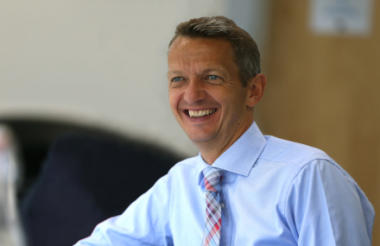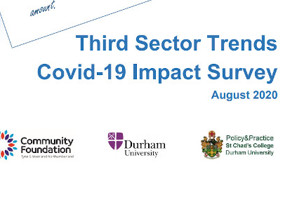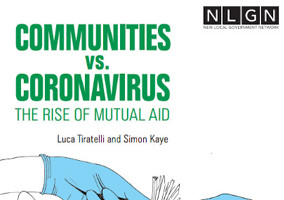The social sector’s contribution is often “underestimated and overshadowed” meaning that it can be left fragile, according to the chief economist at the Bank of England.
Andy Haldane was delivering the opening keynote at Civil Society Media’s Charity Finance Week 2020.
He said the charitable sector has shown a “remarkable degree of resilience” in the face of Covid-19, but that the pandemic has highlighted “fragilities”.
For Haldane, “civil society had been one of the unsung heroes of this crisis” against a backdrop of economic uncertainty.
In the first half of this year, economic activity in the UK collapsed by around a quarter, due to the combined effects of Covid-19 and the public health measures taken to contain it.
During what he described as a “rollercoaster of a year” charities often experienced a rise in demand and large income drops.
Since spring, the economy has been recovering “rather rapidly” and has recouped around two-thirds of its existing losses. The final quarter of this year looks set to be more challenging “both economically and psychologically”.
The year has seen cuts to the income of many, and increased unemployment. Much of the burden of that hardship “has fallen disproportionately on the lowest paid, the least skilled, and the youngest in society”.
Three-quarters of charities having experienced a rise in demand for services
Haldane, who founded charity Pro Bono Economics (PBE), referenced some of the monthly surveys it has been carrying out this year.
The latest survey for November shows around three-quarters of charities having experienced a rise in demand for services through this year. It finds a third have seen demand increase by over 25%.
Haldane said the social sector has been “operating as our institutional immune system” supporting those most in need.
“It is heartening that civil society and charities have plainly risen to these challenges, helped by a surge in volunteering activity,” he said.
The charity sector in a fragile state
Nonetheless, Haldane warned that “it is also very clear this crisis has taken a toll on the charitable sector itself, not least financially”.
Public donations appear to have held up well, but this has been more than offset by losses of other types of income, “leaving the sector in a somewhat fragile financial state”.
The funding gap for this year is around £10bn, according to PBE, and hits to income are expected to persist for the majority of charities.
The sector is not ‘digitally match fit’
Haldane said one “fragility” brought home by the crisis is around the adoption of new technology.
He said: “By and large I think digital adaptation has been speedier and more seamless than many might have feared. That is another example of our collective resilience. Nonetheless, it was clearly the case that many charities, like businesses, were somewhat short of being digitally match-fit.”
Haldane noted that users, as well as charity workers, need the skills and equipment to access digital services.
He added: “These frontier models are not yet fully in the mainstream or indeed in the bloodstream of all parts of the charitable sector, and the scope, the potential, for technology to unleash charities remains very considerable”.
Measurement
He said: “I think what these fault lines are telling us, is that for all its fantastic work, the social sector’s foundations, including financially and technologically, lack some resilience.”
Haldane questioned why the financial foundations of the sector are not as secure as they might be.
He said: “For me, the sector’s contribution is often underestimated and overshadowed relative to the public and the private sectors. These sectors tend to be fairly well defined, indeed fairly well measured, whereas the amorphous mass of civil society is typically neither”.
The result of this is that civil society too often “has been the invisible residual” as it is largely “out of statistical sight and out of policymakers’ minds”.
Haldane highlighted two areas where progress is possible and the impact could be “considerable”. These are measurement and technology.
“To my way of thinking, the lack of information and measurement has been an important cause of the sector's fragile finances, which in turn has inhibited their capacity to invest as fully as they might in technology,” he said.
He added: “As arid as measurement may sound, I think the lack of it is an important reason why the sector has been that invisible residual.”
He noted there has been significant progress at the micro-level, but large parts of the sector remain untouched by impact measurement. He said this leaves their “true societal contribution either unquantified and in many cases not fully understood”.
Progress has been made through the ESG framework to measure companies’ environmental impact, but Haldane said: “In truth, relatively little progress has been so far made with the ‘S’ the social.”
In terms of national economies, the measurement gaps “are larger still”. That is, the larger part of activity “simply does not score in economic success measures” such as GDP.
The surge in volunteers and mutual aid groups are not found in the national accounts of the UK economy.
Haldane estimates the social sector in the UK may contribute around £200bn annually in social value each year, around 10% of GDP. But national accounts will say the measured contribution of the social sector is around one tenth of that amount, that is 1% of GDP.
“These are massive holes,” Haldane said, and suggested now was the opportunity to address these issues.











